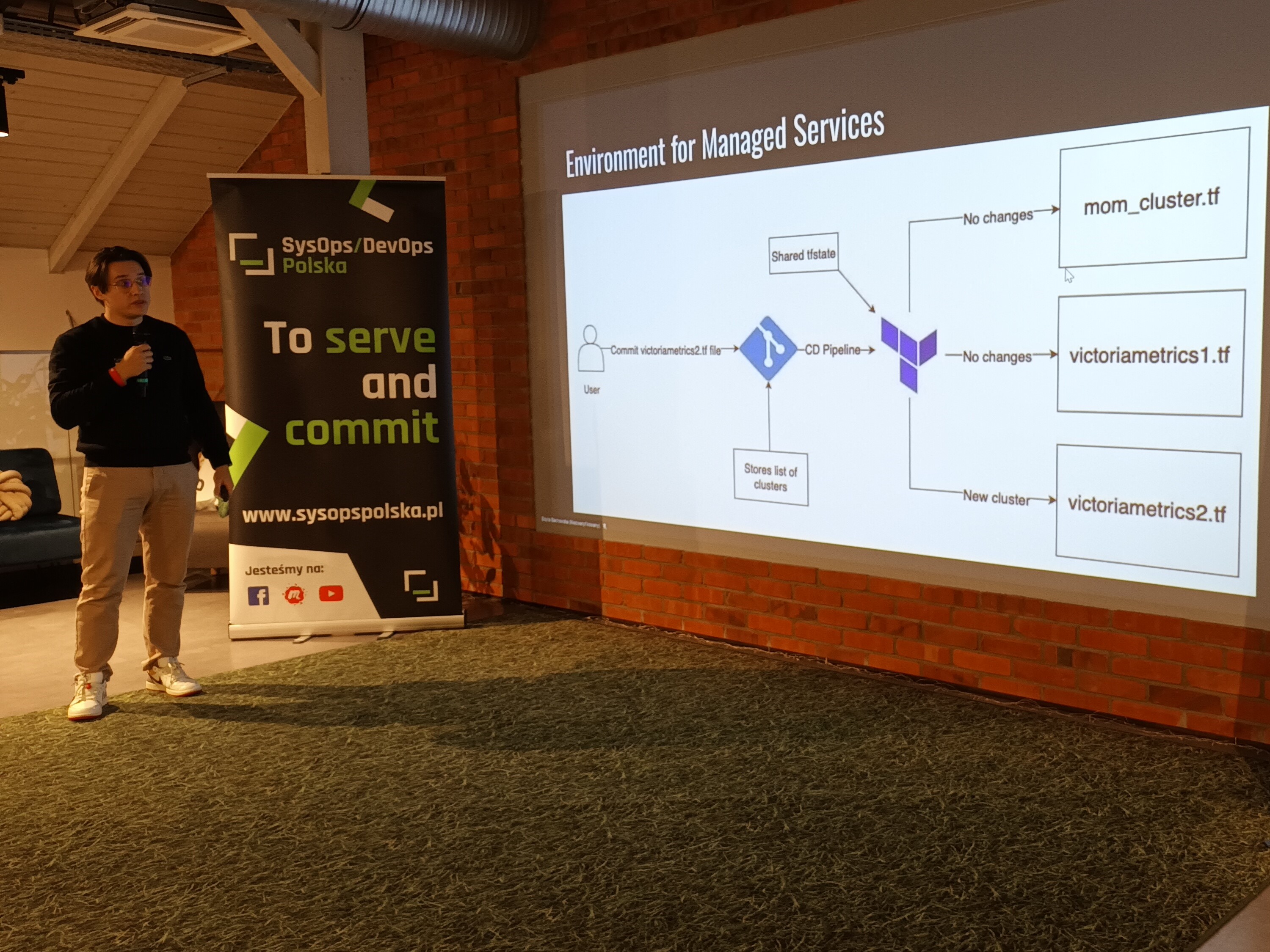-> Przejdź do polskiej wersji tego wpisu / Go to polish version of this post
It seems like we already know everything about the BK2 program and mortgage. Moreover, we are aware of our approximate financial capabilities. It’s high time to get into action and find our dream place on Earth! This post is all about the process of searching and the adventures associated with it.
Requirements
First and foremost, we should sit down and calmly consider what we actually expect and consequently, what we want to buy. If we plan to make the purchase with a partner, we should, of course, establish a common front so that both parties are satisfied. As they say, a joint financial commitment on the scale of a mortgage loan of over half a million PLNs binds more than marriage.
Everyone will have their own individual criteria that they will be guided by. I will present a few that were important to me. I will emphasize again that they will concern a house more than an apartment.
- Price – it’s best to search in a wider range because prices can change (e.g., after negotiation). The BK2 program allows for the purchase of properties up to 800 thousand PLN, which was roughly my financial capacity, however, I decided to find something significantly cheaper because there still needs to be money left for finishing the house purchased in a developer’s state.
- House area – completely individual matter. I opted for a property with an area slightly above 100 square meters. I wanted 3-4 bedrooms (for parents, two for children, and ideally one for something like an home office).
- Layout and size of individual rooms – when buying a ready-made house, it’s crucial that everything makes sense. It’s a vast topic, so I’ll just mention that important factors here include: the size and layout of the kitchen, the size and lighting of the living room, the placement of windows in relation to the cardinal directions, the number of bedrooms, the layout of bathrooms, or even the presence of utility rooms like a boiler room, storage room, and home office.
- Plot area – developers are very cunning, and if there’s a possibility, they’ll maximize the use of the plot for a given investment, even if it means putting houses next to each other with backyards as small as 150 square meters (1.5 ara), allowing only for a barbecue area. Fortunately, local land development plans often effectively curb such tendencies with regulations specifying the minimum allowable plot size for building a house. My opinion is that I didn’t move out of an apartment just to live next to neighbors again.
- Location – I’ll delve more into this in the later part of this post.
- Completion time of the investment – we mustn’t forget about the time from the end of construction to the transfer of ownership, which can take up to 3 months, as well as the time it will take to finish the house. All these deadlines should be considered in our plans because I assume everyone will strive to move into their new home as soon as possible.
- Market – primary (new houses) or secondary (pre-owned houses).
- Type of construction – we’re talking about terraced, semi-detached (twins), or detached houses here. Density of development is also important, i.e., whether we’re talking about a remote area, an area with moderate development, a suburban estate, or even a house within the city. This mainly depends on individual preferences.
- Garage – here, I wouldn’t really ponder whether there should be one, but rather how many cars it should accommodate. Single-car garages are the standard, along with one outdoor parking space for a second car or for guests.
- Type of heating – in new buildings, you’ll basically encounter only three possibilities. The first and least likely option is district heating from the city’s network. The second and currently the cheapest option is a condensing gas boiler, for which permits are still issued, but it’s said that in the coming years even this heating source will be prohibited by regulations. And finally, an electrically powered heat pump, which is quite expensive as a component, and its operation isn’t cheap unless combined with photovoltaics. Nevertheless, I opted for a heat pump and hope I won’t regret it.
- Sewage system – network, septic tank, or maybe a domestic sewage treatment plant? If there’s an option to purchase a property with the possibility of connecting to the sewage system, I definitely consider it the best option in terms of peace of mind, although operating costs are not the lowest. A septic tank, in my opinion, is the worst option because while the initial cost is the lowest, later you have to accept paying around 300 PLN monthly to empty a 10m3 tank (for a family of 3-4 people), plus organizing this is an additional headache. A domestic sewage treatment plant seems like a middle ground solution. The cost of building it is significant (around 13 thousand PLN), but the subsequent operating costs are much lower (around 300 PLN annually for emptying and cleaning). The downside is that not everywhere can a treatment plant be installed because regulations stipulate the required distance from the nearest well from which drinking water is taken, not only ours but also those on neighboring plots within a radius of approximately 30 meters. Additionally, treatment plants rely on soil absorption drainage, so it’s important what the soil on our plot is like. Often it’s poorly permeable clay, which poses a problem, but it can be dealt with. In my case, this was indeed the problem, and the solution is a treatment plant with a large tank where a reaction occurs, and with a leach pit set on a base of gravel and sand. In case the pit gets clogged, the large tank can function like a normal septic tank, which empties conventionally, while in the meantime, the pit processes what it has accumulated and returns to normal operation.
- Access road – every building plot must have direct access from the main road. This can be achieved directly (e.g., a house located on the main road or having its own access road to it) or indirectly through easements. This is regulated by laws, but the condition of this road is a matter that needs to be taken care of. It matters what the road is made of (asphalt, cobblestone, gravel, dirt), whether it’s prone to erosion or flooding, and even how far we are from the main road, which is important in the context of winter, snowdrifts, and snow removal.
- Construction and finishing standard – we’ll learn anything about this only after a more thorough contact with the developer, when they provide architectural and construction documentation, as well as technical documentation, and also provide a document specifying the finishing standard, which is a required attachment to the developer agreement. After obtaining these documents, the greatest attention should be paid to what materials were used to build the house, especially what walls are made of and how it’s insulated.
The presented order is random; I simply wrote as ideas came to my mind. I don’t exclude that I’ll delve into most of the above topics in completely separate posts because some of them are really extensive.
Location
It seems to me that location is one of the key criteria to pay attention to, so I decided to write a separate paragraph about it. In the context of location, important aspects include:
- Distance from significant points for us – the center of the nearest city, workplace, grocery store, parcel locker, post office branch,
- Immediate surroundings – direct neighborhood, distance from other buildings, access to utilities (electricity, water, sewage, fiber optic, gas),
- Broader surroundings – whether it’s a flood-prone area, whether there are facilities nearby considered troublesome, such as airports, railway stations (and generally railway tracks), landfills, sewage treatment plants, farms, crematoria, or even cemeteries.
In addition to all this, it’s essential to familiarize oneself with the municipal MPZP (eng. Local Land Development Plan), which shows the actual cadastral status, i.e., the division of plots along with their designated use, underground and above-ground utilities, watercourses, wells, groundwater, septic tanks/domestic sewage treatment plants, or even roads, not only asphalt but also gravel ones. To do all this, the Geoportal works perfectly, where you just need to go to the Map Content window, go to the Layers tab, choose the Spatial planning and development category, and enable the Local Land Development Plan layer. This will overlay the municipal MPZP on the map. Each municipality also has plans for (at least) the nearest years. We’re talking here about planned investments and changes in the MPZP. It’s crucial to pay attention to whether there are plans to route a new medium/high voltage line or gas pipeline through the middle of the plot or right next to it in the future. In practice, permits should not be issued for building on such areas, but not all things and flaws have been caught in history, so nothing can be taken for granted and one should not blindly trust authorities. Based on the analysis of the MPZP, it’s also possible to predict where new houses will be built in the future. It’s safe to assume that all undeveloped (yet) plots marked MR (residential farmyard development), MN (single-family residential development), and MW (multi-family residential development, a.k.a. blocks) will be developed with houses soon. On those marked U (service development), service facilities may soon be built. The same goes for agricultural areas marked RP, characterized by a low class of agricultural land. In their case, we can’t talk about the nearest years, but over time, they can be quite easily deregulated and transformed into MR, MN, or even MW.
Unfortunately, gathering all this information is very tedious because whenever something is wrong, the announcers try to hide it, and access to them is not made very easy. The most sensible approach seems to me to loosely scan the market first, to get an idea of where the properties for sale are located at all. New houses usually arise in clusters. For the Lublin area, where I was looking, these were mainly Jakubowice Konińskie, Nasutów, Jastków, Dąbrowica, Głusk, Kalinówka, Łuszczów, and Dys. You can see on the map that these are areas located around a circle, with its center roughly in the center of Lublin and its radius being 15-30 km. From these clusters, you should choose the ones that interest you more and start exploring the area from them. This will give you an idea of which investments to avoid and not waste time on.
Where to look for offers
I happen to have a very concise answer to this question. All we need are two classified ad portals – otodom.pl and gratka.pl. Otodom is a creation of the OLX group, while Gratka operates under the patronage of Onet. Any respectable real estate seller advertises on at least one of these two portals. You can find ads there from both private individuals simply selling their house and developers. These recommended portals provide convenient tools for searching ads, which can be easily filtered and added to favorites so that you don’t miss them later. You can also save the search criteria alone and enable email notification when someone adds a new ad matching the criteria, modifies existing ones (e.g., by adding more photos or information about reservation), or removes those that interested you because, for example, the property was sold, which surprisingly also provides some information, e.g., about the prices people are realistically willing to pay for properties in that area.
By searching available ads in this way, you’ll quickly notice that a significant portion of them is published by intermediaries such as real estate agencies. It’s good to sometimes break away from browsing only Otodom and Gratka and check out the websites of these agencies, where the entire portfolio of properties they mediate in sales is often presented in a pleasant form. The pro tip here is that on agency websites, there are often not only different prices but also more information.
Intermediaries (real estate agencies)
The existence of intermediaries in the process of buying/selling real estate has its pros and cons for both parties. For the seller, such a real estate agency is a significant relief from the marketing side and basic paperwork. Such an intermediary will take care of taking attractive photos and making descriptions of the property, creating an advertisement, and contacting potential buyers, whom they can filter out at an early stage before passing on their contact details to the developer. The first meeting for preliminary inspections takes place only in the presence of the agent, and I assume it often doesn’t go further because people view ten properties, but ultimately are only interested in a few. It must be admitted that for most developers, such a service is a very attractive option. Of course, no intermediary works for free, and here we come to the disadvantages, namely, the sales commission.
Regarding the commission for real estate agencies, everything depends on the agreements between them and the developer. Such an agency usually charges a commission ranging from 1-3% of the sale price. This commission may be paid by the developer and included in the price stated in the advertisement, but it may also lie on the buyer’s side and be an additional cost that needs to be added to the advertised price. Information about this should already be included in the advertisement itself, although from experience, I know that it varies. I also encountered a case where the commission amount could be negotiated, so I always recommend trying. If paying the commission is on our side, it’s also worth trying to find the location of the property on our own and direct contact with the seller, bypassing the intermediary. In most cases, this is difficult because the advertisements are deliberately written in a way that makes it hard to find out which plot it concerns or whose specific investment it is. It’s not impossible, as after reviewing hundreds of ads, in some cases, I was able to find information about the location in just a few minutes, e.g., by searching for characteristic points on the attached photos and later wandering around on Google Street View/Google Earth. However, if we fail in such an action and are very interested in a particular property, unfortunately, we have to pick up the phone and contact the intermediary. In such a case, it usually happens that we arrange to meet at a location designated by them, which often isn’t close to the property itself. They do this so that before showing anything and revealing the cards, we sign a contract confirming that the given intermediary is the person who showed us the property, and they are entitled to a commission in the event of a successful transaction. Only after all signatures have been collected does the representative of the real estate agency with a smile lead us to the destination point and conducts the presentation. I must admit honestly that such a situation is somewhat pathological, but on the other hand, I also understand the approach of agents who, acting differently, would probably often be simply deceived. A 2% commission on 800 000 PLN is a whopping 16 000 PLN, so if someone has the opportunity to avoid such a fee, they will certainly take advantage of it, even if it means acting unfairly towards the other person. A much more pleasant situation is when the developer pays this commission themselves and simply includes it in the final price. Both (or rather all three) parties then have a clear situation, and all unpleasantness is avoided. That’s exactly how it was when buying my house, and I remember it very well. I had good contact with both the developer and a very nice lady from the real estate agency, who not only took care of the initial contact but also helped in the later stages.
Summary
Looking back, I can say that the search process is both very enjoyable and unfortunately difficult. You have to dedicate a lot of time to browsing and analyzing advertisements, scheduling presentations, and driving to them. However, the most challenging stage is definitely the decision-making process. It’s the endless thinking, discussions, stress, and worries about whether we are making the right choice. This is accompanied by time pressure, even if it’s unjustified. The point is that you can’t see everything at once; it’s a process that often takes a very long time. However, when you finally find something nice, you fear that if you don’t decide now, this opportunity will be lost, but on the other hand, there is always another property to view, which may turn out to be even better. Fortunately, there is something called a reservation agreement, which allows you to relax a bit, cool down, and give yourself time to explore all options. I recommend using it.
Dear Reader, if you are reading this post because you are currently in the process of searching for your perfect place on Earth, I strongly support you and offer my help as much as I can! Feel free to write, I will definitely reply.













